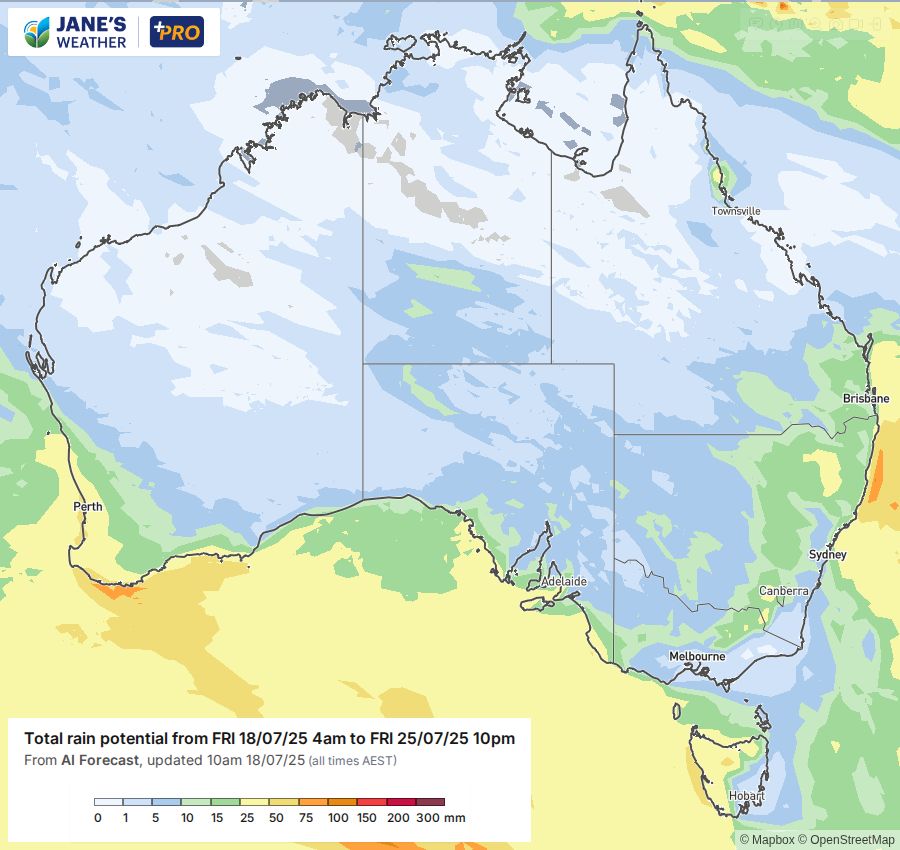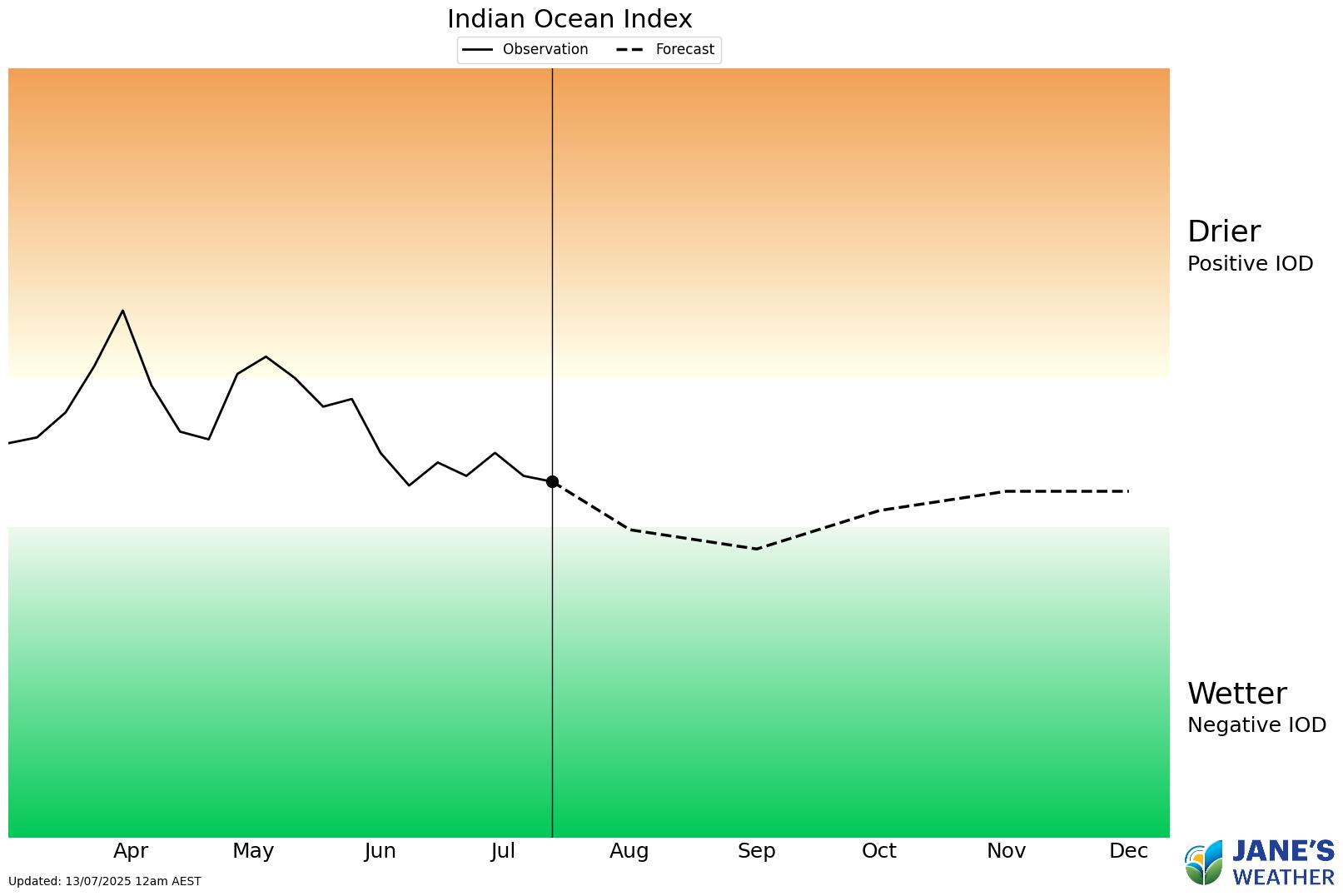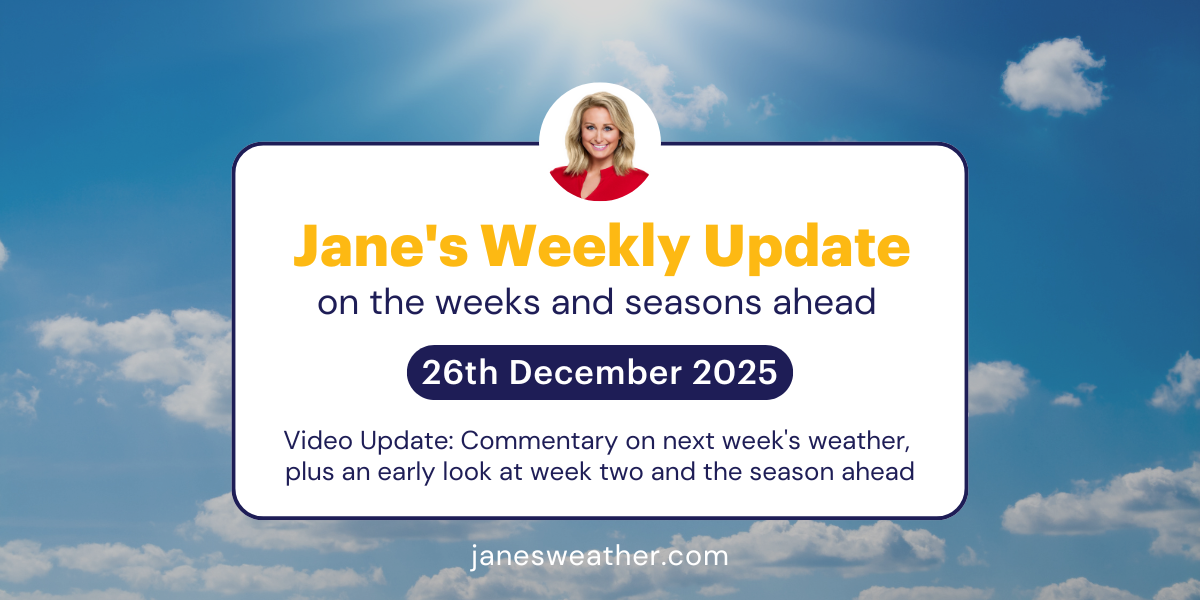We're about to enter a new weather pattern where moist air from the Indian Ocean surges across Australia, meeting up with low pressure to produce widespread rain for those in its path.
We begin with out of season rainfall for northeast NSW and southeast QLD on Friday. That contracts to the coast for the weekend and early next week.
Meanwhile, the southeast is generally dry, with frosty nights, as high pressure has moved in making the cold fronts slide southwards (producing wet weather in parts exposed to the west but not the rest).
The next big cold front for the southwest is on Sunday. That kicks off a wave of rain that moves across the country early to mid next week.
Another big cold front arrives in the southwest mid next week, kicking off another wave of rain that moves across the country to end the week/next weekend.
Both of these rain events are fed by moisture from the Indian Ocean, and should affect every state and territory on their way through.
As it comes from the northwest there are spots that will miss out - in the southeast this puts Melbourne - Gippsland - southeast NSW, and southeastern Tasmania, on the 'dry' side of the ranges; but WA, SA, northern TAS, northern VIC, western NSW, even southern NT and western QLD should see some rain.
It's not likely to be huge falls, but instead some nice soaking rain that lasts for a day or two, and then repeats with the next wave a few days later.

The Indian Ocean continues to transition into our new phase: Negative. This is the La Nina of the Indian Ocean without the fancy name. When this index nears and crosses the threshold then moisture is actively pushed towards Australia - and whenever that can meet up with low pressure we see rain.

For the full update, don't miss this week's video - perfect if you have 12 minutes to spare!
In this series I'll take you through the drivers of our weather, highlighting any changes over time and things to watch out for (generally every Friday). It covers weather elements like temperature and rainfall, and how they are driven by moisture from the Pacific and Indian Oceans, as well as bursts of energy from low pressure (SAM and MJO).
See and hear my commentary as I take you through the weather pattern's effects on our rain and temperatures in detail over the next week, with a brief look at week 2 and beyond as well.
Plus what is driving our weather in the weeks and months ahead, with the latest on El Nino/La Nina, the Indian Ocean Dipole (IOD), the Southern Annular Mode (SAM controls our weather systems), and the Madden Julian Oscillation (MJO connects tropical moisture to our weather systems).
I update this commentary each week, generally on Friday's. Make sure you are signed up (free or a subscription) so you don't miss an update.
Stay up to date with the forecast specifically for your area in our hour by hour outlook for the next 10 days. Download our app for iPhone and Android.
As always, you can see each of these graphics as soon as they update, as well as more information about them under our Rain Outlook and Seasonal Outlook pages within Jane's Update, along with our Snow Forecast in the snow season.

For further insights specifically for agriculture, to improve the utilisation of your resources, tailored to any Australian location, please upgrade your membership. You can take advantage of our free 30 day trial.
Upgrade to see full insights to help plan the best use for your resources:
- frost risk
- spraying conditions
- evapotranspiration to efficiently manage available water for crops
- growing degree days to monitor growth
- full ten day hour by hour outlooks, all variables, and all model data
- customised alert notifications
.png)

.png)
.png)